 Green Architects, Green Building and Sustainable Architecture are all the practice of increasing the efficiency with which buildings and their sites use, recycle and harvest energy, materials and water. This philosophy reduces the impact of construction and human and vehicular activities on human health and upon the health of the environment in which we live.
Green Architects, Green Building and Sustainable Architecture are all the practice of increasing the efficiency with which buildings and their sites use, recycle and harvest energy, materials and water. This philosophy reduces the impact of construction and human and vehicular activities on human health and upon the health of the environment in which we live.
Green Architects and Material Selection
Green architects accomplish this through selection of recycled materials, use of more energy-efficient systems, locating buildings and their walls, windows, roofs and other surfaces in such a way as to minimize their energy consumption. This is accomplished with attention to the initial, or capital cost, life-cycle cost (cost to operate over the life of the building), required energy to maintain and eventually remove and recycle into future green facilities.
Sustainable Home Architects and Green Subsets
 Green Design, Green Architecture, Green Architects, Sustainable Architecture and Green Building is also referred to as Sustainable Design (or environmental construction),or Sustainable Architecture although sustainable facilities have a keener focus on the use of materials that can be sustained by our culture indefinitely, without depleting our natural resources. Green Design/Green Building is one aspect of Sustainable Architecture/Sustainable Design.
Green Design, Green Architecture, Green Architects, Sustainable Architecture and Green Building is also referred to as Sustainable Design (or environmental construction),or Sustainable Architecture although sustainable facilities have a keener focus on the use of materials that can be sustained by our culture indefinitely, without depleting our natural resources. Green Design/Green Building is one aspect of Sustainable Architecture/Sustainable Design.
Healthy Home Design, Green Indoor Air Quality and Architects
Green architects approach improved Health Home Design and Indoor Air Quality (IAQ) and reduced environmental impact as a subset of Green Architectural principles. We seek to attain aesthetic and ecological harmony between our buildings and adjoining environment. Our desire is to create architecture that appears to have naturally grown from the rocks, trees, bushes and mountains of their setting.
There seems to be a growing realization that what humans, as a species, build, operate and move, affects the micro and macro climate of our world.
Rand Soellner Has Been One of the Green Architects for Decades:
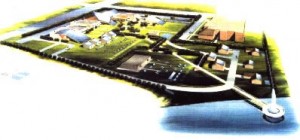
 Rand Soellner Architect is a green home architect that has been creating, using and designing with these concepts (green design, green architecture, green home design, sustainable architecture) since the 1970’s. Rand created the master site plan and concept design for the new Florida Solar Energy Center in Cocoa Beach, Florida in the late 1980’s, for the University of Central Florida. Mr. Soellner also helped Orange County, Florida to cleanse and renovate 4 “sick buildings” in the 1990’s (which were not created by him or his company).
Rand Soellner Architect is a green home architect that has been creating, using and designing with these concepts (green design, green architecture, green home design, sustainable architecture) since the 1970’s. Rand created the master site plan and concept design for the new Florida Solar Energy Center in Cocoa Beach, Florida in the late 1980’s, for the University of Central Florida. Mr. Soellner also helped Orange County, Florida to cleanse and renovate 4 “sick buildings” in the 1990’s (which were not created by him or his company).
Rand was also the Chairman of the AIA’s Task Force on Quality Control (Central Florida Chapter) in that same era. He is one of the green architects on duty in the USA.
Architects, Reduced Materials, Reduced Trash, Green Policies
Since the days of his solar energy center, Rand Soellner has been one of the green architects in the country. He creates wonderful home designs and other buildings in naturalistic settings, using recycled materials (like the slate-look Eco-Star roof shingles on his Falcon Cliff Lodge, 2006, Cashiers, NC which are actually recycled rubber and plastic). This is a hybrid timber frame home. Timber frame home architects designs like this reduce landfill trash and make use of products that incorporate reuse of irreplaceable resources. Sustainable architecture principles are at work here.
Rand Soellner home architects also make use of historic recycled timbers and boards into Mountain Home Designs, using post and beam architects to create a timeless quality that also makes reuse of wood with character.
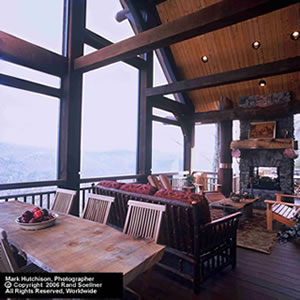 Green Architects Protect Major Glass Areas
Green Architects Protect Major Glass Areas
Green architects like Rand Soellner also position major glass and window areas toward the view, which is an inescapable requirement for mountain view homes. Soellner incorporates large roof overhangs over these areas, to shield them from direct sun, thereby aiding the comfort of the house’s interior spaces while reducing the air-conditioning requirements. This is a good example of Green Design and also reduces the use of fossil fuel consumption, reducing greenhouse gas emissions, reducing global warming.
Reduced Maintenance, Architects Practicing Green Home Design Principles
Soellner houses also receive a special waterproof roofing underlayment (warranted by the material provider) that protects the sub-surface portions of your roof better than traditional asphaltic felt, for only pennies more per square foot, thereby extending the life of your roof system and structure. This modest upgrade in cost reaps tremendous benefits years later, when most people would be replacing their roofs, not to mention saved inconvenience. Rand Soellner has always sought to reduce maintenance of his projects for the owners. This is another key ingredient used by green architects: less energy spent replacing materials.
Architects Provide Improved Enjoyment, better Aesthetics, Kinesthetics & View Systems with Green Approaches
Rand Soellner used to design projects for one of Frank Lloyd Wright’s main apprentices. Rand learned about Frank Wright’s creation of “View Systems,” in which the views of nature outside a home are framed with glass areas and that circulation routes within and outside of a residence are planned to orient toward these views. This knits together your paths of travel in your home with views of your site. While this sounds simple, it becomes a major guiding principle in all Soellner houses, and is one of the differentiating aesthetic principles that elevates a residence into the realm of architecture. For green architects, this opens a new vista of appreciation and enjoyment that many people have never before experienced in their lives. Rand has enjoyed several phone calls during the last several years, in which clients find themselves sitting in a Soellner-designed house and spontaneously phone Rand, to thank him for creating their special residence, which enjoys such wonderful views of their sites.
Rand Soellner Green Architects project in Cashiers, NC
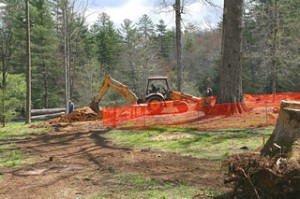 This photo illustrates how the Client-Contractor- Green Architects cooperate together. The 64” diameter oak tree on the right side has sacred status. Note the red construction fencing protecting the tree and its roots for a distance nearly equal to its canopy. This is but one of the ways that Green Architecture principles are at work in our projects every day, preserving our heritage for generations yet to come to enjoy. This area is part of a large acreage estate that has been in the client’s family for about a century.
This photo illustrates how the Client-Contractor- Green Architects cooperate together. The 64” diameter oak tree on the right side has sacred status. Note the red construction fencing protecting the tree and its roots for a distance nearly equal to its canopy. This is but one of the ways that Green Architecture principles are at work in our projects every day, preserving our heritage for generations yet to come to enjoy. This area is part of a large acreage estate that has been in the client’s family for about a century.
Examples of client satisfaction comments for green architects:
Client call from Eagle Mountain Aerie, 4/2007: “I just wanted to thank you for creating this home for me and my family. I have a very busy and hectic life in Florida, and coming here to North Carolina and being in this home overlooking the trees and lake is wonderfully relaxing and rejuvenating. Thank you for designing my home.”
Client call from Adirondack Dream, 2006: “My wife and I are finish
ing moving in furniture and we are, for the first time, sitting where you imagined us to be, months earlier. . . We are seeing the views you framed for us and now understand how you have captured the best of what this site had to offer. Thank you!”
Your Required Financial Commitment to Being “Green” for Sustainable Home Architecture
We have seen that some building developers and homeowners believe that they can ask their architect and builder to simply “make this a green project,” without realizing that there are capital (or initial, up front) required financial investments. For example, being in compliance with Energy Star programs, like the LED (our suggestion) required in lieu of normal incandescent bulbs in much of a home, cost more up front. This means you have to pay your electrician to install the light bulbs in your house or building (the LED lamps cost more initially, but over decades, consume about 1/6th of the energy and produce less heat than the incandescent, so your Life Cycle costs are less over your structure’s lifetime). Also, the LEDs contribute far less mass to land fill dump sites, reducing the trash on the planet. Beware of the current trend of CFLs (Compact Fluorescent Lamps). We have it on good authority from a leading energy engineer that these contain mercury which end up in landfills, which then breakdown and drain into your local water table, polluting your drinking water and killing you earlier.
Green architects are concerned about issues like this. Another example: the cheapest First Cost (or up front initial investment) way to insulate a home is to use ordinary fiberglass insulation. This is still a reasonable choice, but we suggest thicker batts than normal (see Comparisons further below on this page). While the least expensive for capital expenditure, there are some drawbacks with fiberglass.
For instance, in roofs, it must be vented to stave off anaerobic bacteria. This means that in winter, arctic air will be swirling through your attic (unless you do something very creative, like have an end wall attic vent with a motorized damper controllable from inside the home). During summer, you will have oven-like humid air doing the same thing in your attic. Once again, the end-wall attic vent with fan and damper can help deal with the temperature somewhat, but can do nothing regarding the humidity. There must be special attention given to how the manufacturer’s interior-facing vapor barrier is installed, to help deal with infiltration, which fiberglass is unfortunately not good at resisting. At the time this is being written (mid 2008), it appears that what we consider to be the tightest, most efficient insulation (sprayed polyurethane) can be anywhere from 3x to 7x the cost of fiberglass roof insulation, when both are at an R-49 level. This huge added capital expenditure is something that not many homeowners can accept, which is why most people default to the least of less expensive options, regardless of the life cycle cost returns; as the homeowners are concerned about their monthly mortgage amount. In other words, if you want the most energy efficient insulation and virtually no infiltration through walls and roofs, expanding foam is the way to go (there is much controversy from various manufacturers as to what is the greenest, healthiest and most efficient). You will enjoy lower heating and air-conditioning bills and your added up-front investment will eventually pay for itself.
But green architects tell us that this is not free. You will have to come up with more money initially to pay your contractor to install these improved types of insulation, windows, doors, HVAC equipment with higher SEERs, and more efficient lighting. As a rule of thumb, on a $1 million mountain home project, the added investment may be in the 5% to 15% range to use as many energy-efficient systems and materials as possible, along with greener materials that are more sustainable for our environment. So, when budgeting your project, please work with your architect, engineers and contractors to make sure you have allocated adequate extra funds to pay for these healthier, more energy-efficient materials and systems that are more ecologically sensitive. If the percentages above seem too high, there are many value-engineered approaches to give you the right combination of efficiency and sustainability to suit your specific project. Ultimately, you as the provider of funding for your project will make these choices. Just realize that saying: “Make my project Green” has initial financial implications for which you should be prepared. Now go forth and make healthy, energy-efficient architecture with recycled, non-polluting materials!
Rand Soellner green architects feel a spiritual connection to the land and enjoy saving resources and taking architecture a big step further than this: creating something that knits you together with your site so that you perceive something never enjoyed before, a oneness with the natural setting around you. This is something that green architects understand and deal with everyday.
What are some green things you can do?
Here are a few green ideas:
Replace as many of your incandescent light bulbs as you can afford with the new LED lamps (the technical term for light bulb is “lamp”, but don’t count on your salesperson to know this!). This is the result of a special analysis done by green architects. The reason is: these new types of alternate lamps consume less energy (which means your electrical consumption should decrease) and also they burn cooler than incandescent lamps. Know that they cost quite a bit more than cheap incandescent lamps (that’s what we mean when we talk about capital cost: the price you have to pay to use improved, more efficient technologies), versus Life Cycle Costs (the cost to operate your home or building). What is the correct balance? That is up to you. Your local power company may have engineers on staff to assist you in this analysis. They do this because they don’t really want to have to build new power plants, which is an enormous capital cost for them; they would rather have their customers stretch their energy dollar to continuing using the existing utility infrastructure.
Actively use your curtains and window coverings, opening them wide during the winter, when you have sun on them, to help heat your home for free, and closing them during summer, to help insulate your home.
When you build, use higher than normal insulation levels. You will thank yourself later when paying your power bills.
Healthy Home Design Architects are also green architects
Ecological & Healthier Lifestyle & Consumer Products
There are little things each of can do daily to help make this planet (and our own bodies) a better, greener, safer place. Some of your choices will also be healthier for you. Not all of these have architectural implications. Some of these items are more personal. We wanted to share with you some of these choices, in case you might be wondering: “What can I do?”
- BRING YOUR OWN REUSABLE FABRIC GROCERY BAGS: Instead of having your grocer bag your purchases in plastic or even paper bags, bring your own reusable canvas bags. Some stores (like Ingles in the Western North Carolina, USAarea) sell these for about a dollar each. Yes, it means you have to spend a little money for something you otherwise would have for free. There are some benefits. For one, the canvas bags are larger and you can carry in 2 of them, in what used to be bagged into about 8 plastic bags. Keep these bags in the back of your vehicle after unpacking your groceries, so they will be there when you need them. You may find them useful for other items as well, such when buying clothes, office supplies and the like. Merry and I estimated that we now save about 400 to 600 plastic bags from being manufactured and wasted each year. Plastic is a petrochemical product, so we figure that our dependence on OPEC has just been reduced a little. If every American family did what we are doing, this might mean 600 million or more plastic bags a year that will no longer need to be made. How much oil and energy reserves and demand will that eliminate? How much pollution from their manufacture? How much bulk in landfills across our nation? Hopefully this will catch on with folks around the world.
- USE A MORE NATURAL DEODORANT: Aluminum-bearing items may affect your tendency to contract Alzheimer’s disease. It seems that aluminum can collect in our brains and evidently scientists have discovered this in patients contracting the dreaded disease. Avoid cooking with aluminum pots and pans. Also, discontinue using underarm deodorants containing aluminum. This may sound funny, but read the ingredients on your deodorant. Surprised? Most contain some form of aluminum derivative. Lymph nodes are in your armpit area. Not a good place to be spreading what amounts to liquid aluminum for absorption into your body.
- STAY AWAY FROM “PARTIALLY HYDROGENATED” ANYTHING: Merry says that she has seen medical reports that these ingredients combine with things in our bodies that can damage them. Read labels. You will find that “Partially Hydrogenated…” (oils typically) are in just about everything. The reason food manufacturers use so much of it is that it helps foods retain their shape and blending in their packing. That’s nice for them, bad for you. Instead of buying peanut butter with this ingredient, select the nuts themselves and run them through the grinder (many stores now offer this option) and make your own organic spread, free of unnecessary additives. You will find that it is difficult locating foods you like without Partially Hydrogenated…” It is worth your while to find them or make your own.
- STAY AWAY FROM FRIED FOODS: fast way to clogged arteries and a heart attack. It is unfortunate that they taste so good.
National Do Not Call Registry (part of retaining one’s sanity for a healthy lifestyle)
How many times have you sat down to eat supper and had to deal with an annoying sales phone call or political robot recording? The FTC (Federal Trade Commission of the US government) established a National Do Not Call Registry several years ago and the way it works is simple: click on this link:
https://www.donotcall.gov/register/reg.aspx
then follow the instructions. It is simple to do and took me less than 3 minutes. You enter your phone’s area code and number, then your e-mail address, then press Submit. The reason the FTC requests your e-mail address is so that they can send you an electronic confirmation that it is indeed you requesting to be placed on the Do Not Call Registry. Then, in a couple of minutes, the FTC e-mails you a confirming e-mail to which you simply click on a hotlink, and you are done. In the recent elections, I received about 10 calls a day and I had previously registered. According to the FTC’s website, you are registered for life, so I am not sure how I suddenly became fair game for telemarketing, so I just registered again. I hope it sticks this time. The reason we have this information here on our architectural design website is to assist you in having a more well-rounded resort-like lifestyle, without unwanted distractions. Enjoy!
Green architects create new policy regarding construction debris
Many people ignore the basic “boilerplate” that makes up the General Requirements section of construction specifications. Green architects do not. People in the industry generally regard specifications as a boring, thankless task and the verbiage that has been there for decades, tends to remain there. Until Now! Rand Soellner has produced a one-of-a-kind “Green” policy regarding construction dumpster usage and how debris is disposed of on RandSoellner projects. Instead of one large dumpster, Rand Soellner projects now have 2. One is for trash, the other is for recyclable items. “this is a policy that is long overdue and should be implemented nationwide and worldwide,” said Soellner, “Construction generates enormous amounts of debris, easily as large, volumetrically, as the home or building being built.” Soellner said that it is high time that construction debris be sorted, as it is generated, and deposited into separate dumpsters, for easy shipment to either a landfill or recycling center. The typical approach of having one large dumpster is regarded as the simplest, easiest and cheapest way to handle construction debris, however, Soellner (and all green architects) does not believe having 2 smaller dumpsters should result in any significant increase in expense for the persons for whom the project is being built. Also, the trash company can actually make money on selling the recyclables, so there is incentive for the trash companies to start making this SOP (Standard Operating Procedure). Dangerous chemicals, such as paints, preservatives and other coatings should be disposed of by the trash company in special sanitary disposal sites created for this special purpose, and Rand Soellner’s new Project Clean Up specification handles this as well.
Social media tags: green architects, green home architects, timber frame architect, post and beam architect, rustic home design, log home, denver, glade springs, west virginia, woodbine, nashville, chattanooga, cashiers, highlands, atlanta, boulder, salt lake city, park city, tacoma, home architects.
———————————-
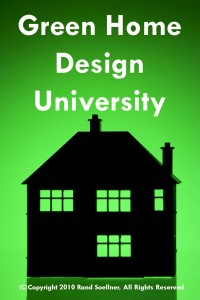 GREEN HOME DESIGN UNIVERSITY QUESTIONS, for those of you taking Rand Soellner Architect’s course of green instruction: about the above subject:
GREEN HOME DESIGN UNIVERSITY QUESTIONS, for those of you taking Rand Soellner Architect’s course of green instruction: about the above subject:
1. Which of the following techniques is NOT a sustainable method for Green Home Design & Construction?
a. using recycled materials for construction.
b. using more energy-efficient systems for air-conditioning and heating equipment.
c. locating homes so that their windows are more protected by shade during summer.
d. burning as much oil as possible every year until it is gone.
2. “Going Green” in home design and construction typically costs__________than normal homes?
a. a lot less b. between 5% to 15% more c. about the same
3. What type of light “bulb” uses the least amount of energy for about the same amount and quality of light?
a. LEDs. b. Incandescent. c. CFLs.
If you are continuing in your Green Home Design University course to the next level,
Favorite this page now, by clicking on your “Favorites” menu choice in the upper left of your Windows Internet Explorer window,
then click here: Healthy Home Design to go to the next level 4.
———————————-
answers:
1. d., 2. b., 3. a.

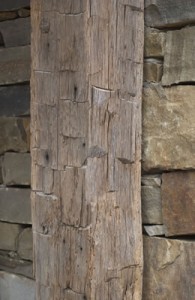
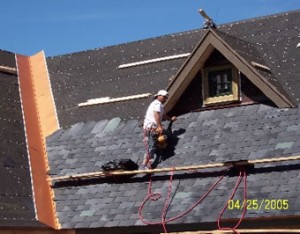
11 Comments
Green Home Design and Green Architects that Design Green Residences and Eco-Friendly Home Design | mountain homes
1:45 pm - July 20, 2009[…] “ ‘Green’ is merely the latest buzzword for something that ecologically-minded architects have doing for […]
Energy-Efficient Lighting Breakthrough: LED Lighting in Fine Mountain Homes & Mountain Resorts | mountain homes
1:55 pm - July 20, 2009[…] […]
Mountain Home Architecture: The Answer to Green Home Design | mountain homes
4:34 pm - July 20, 2009[…] […]
Green Architects Making a Greener World | Green Architects
10:16 pm - July 28, 2009[…] […]
Asheville Home Architects, House Plans, Mountain Home Design, Floor Plans Designing | mountain homes
2:04 pm - August 1, 2009[…] […]
Park City Home Architects | mountain homes
3:29 pm - August 8, 2009[…] […]
Leading Custom Home Architect Celebrates 25 years & Green Design Initiative | mountain homes
6:04 pm - August 15, 2009[…] […]
Going Green in a Grey Economy, Green Home Architects, Going Green 4 Less | mountain homes
11:11 am - October 24, 2009[…] Architect is promoting “Going Green 4 Less” : a strategy to help custom home architects be Green Home Architects, selling the idea of using energy efficient home architects design systems, materials and methods, […]
Local Architect Pushes Green Practice – Green Home Architects, Green Design, Going Green 4 Less | mountain home architects | custom homes architect | luxury residential
9:28 pm - November 15, 2009[…] https://www.homearchitects.com/?page_id=358 Green Design 1, Green Architecture, Green Home Architects, Sustainable Architecture […]
Green Gauge for Green Home Architects : Build Your Home on the Green Gauge for Free | mountain home architects | custom homes architect | luxury residential
9:46 pm - November 15, 2009[…] https://www.homearchitects.com/?page_id=358 Green Design 1, Green Architecture, Green Home Architects, Sustainable Architecture […]
uberVU - social comments
7:48 pm - February 18, 2010Social comments and analytics for this post…
This post was mentioned on Twitter by RandSoellnerArc: Green Home Architects GREENTIPS 1-4-2010
Green Architects and sustainable architecture:
https://www.homearchitects.com/green-architects…